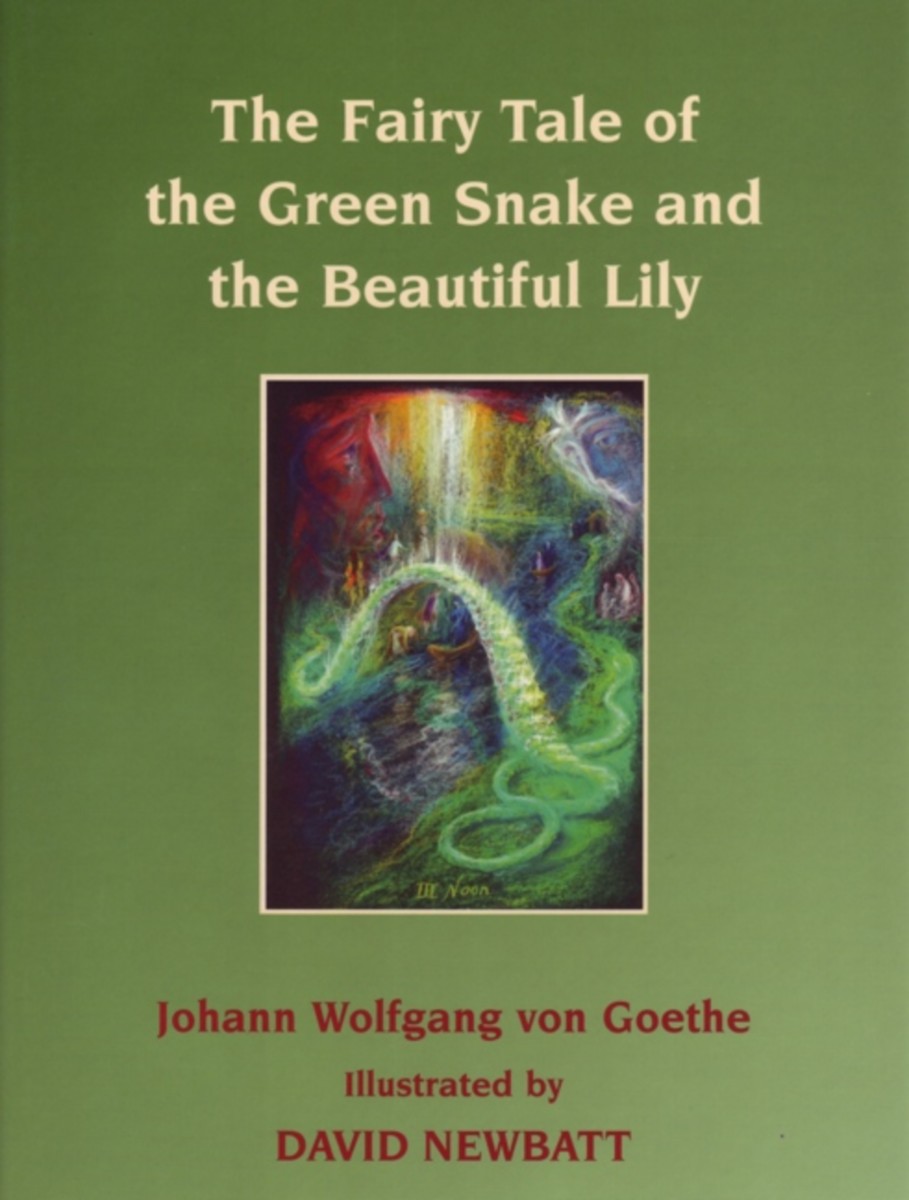The Fairy Tale of the Green Snake and the Beautiful Lily
Illustrated by David Newbatt
Contributions by Tom Raines
Translated by Thomas Carlyle
- Publisher
Wynstones Press - Published
11th September 2007 - ISBN 9780946206582
- Language English
- Pages 48 pp.
- Images 7
A true fairy story is a work of art. At Michaelmas 1795, a series of stories appeared, concluding with a fairytale, The Green Snake and the Beautiful Lily.
The tale tells of magical transformation—one that, when the time is at hand, can be experienced by anyone. The author of those stories was Johann Wolfgang von Goethe, and the creation of his fairytale would have far-reaching consequences.
This edition of Goethe’s fairytale arose from illustrator David Newbatt’s inspiration to join Thomas Carlyle’s English translation with a new series of pictures, the purpose of which is to reveal the sevenfold process that proceeds in Goethe's fairytale—a process that forms an inner path of development and personal transformation.
In addition to the translation by Thomas Carlyle and the series of seven pictures by David Newbatt, The Green Snake and the Beautiful Lily includes an introduction by Tom Raines.
Johann Wolfgang von Goethe
Johann Wolfgang von Goethe (1749–1832) is a giant of German and world literature. Indeed, he coined the term Weltliteratur and spoke Greek, Latin, French, English, and Italian. In addition to its profound quality, the volume of work during his eighty-two-year lifetime is impressive. Among other works, Goethe wrote a worldwide, bestselling novel, The Sorrows of Young Werther (Die Leiden des Jungen Werthers, 1774), volumes of poetry, and several dramas, including his masterwork Faust— a massive two-volume work that was not entirely finished by the time of the poet's death. Goethe also engaged in painting and science, from which came his Theory of Color (“Farbenlehre”) among other scientific works—a collected edition that Rudolf Steiner edited and introduced as a young man (see Nature’s Open Secret). Indeed, Goethe's body of scientific and philosophical works was one of the most important influences in the development of Rudolf Steiner’s early work and for Anthroposophy as a whole.


